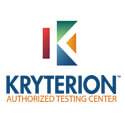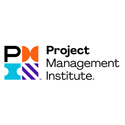Core Solutions of Microsoft Exchange Server 2013 (70-341)
About This Course
The Core Solutions of Microsoft Exchange Server 2013 course will train professionals to secure, administer, deploy, support and plan Microsoft Exchange Server 2013. The course will also train you to develop Exchange Server 2013 as well as instill the required knowledge and expertise to troubleshoot, maintain and monitor Microsoft Exchange Server 2013.
Most importantly, the course trains you to develop a robust base for optimizing performance and countering security threats using industry best guidelines and practices.
The course is aimed at professionals who plan to become enterprise grade messaging admins. It is also apt for IT help desk experts and generalists, who wish to learn about Microsoft Exchange Server 2013. Microsoft recommends you to have a least of two years prior experience in the IT domain typically in areas such as system administration, help desk or network administration. No need of prior experience in previous Microsoft Exchange Server versions.
Who Should Attend This Course
The course is ideal for IT professionals who wish to become enterprise-messaging administrators. It is also apt for IT help desk experts and generalists, who wish to learn about Microsoft Exchange Server 2013.
Why This Course
Core Solutions of Microsoft Exchange Server 2013 coursework is designed to instill an in-depth understanding and expertise required to plan, deploy, manage, secure, support and troubleshoot problems for Microsoft Exchange Server 2013. It helps you stand out from the crowd by providing a strong base to help you optimize MS Exchange Server 2013 performance and tackle security threats using industry best practices.
One of the prominent benefits to why you should take up this course is that it is a Microsoft certification and Microsoft certified professionals are in great demand across the world.
Helps you achieve the following:
- Deploying MS Exchange Server 2013
- Managing Exchange Server 2013
- Configuring and creating mailbox database
- Configuring storage on mailbox servers
- Implementing and planning public folder mailboxes
- Outlook configuration
- Configuring ActiveSync for Exchange Server 2013
- Configuration of anti-spam on Exchange Server 2013
- Monitoring server
- Troubleshoot database availability
- Configuring antimalware
- Configuring client access servers
Course Objectives
The course enables you to:
- Plan as well as configure mailbox servers
- Understand MS Exchange Server 2013 deployments, requirements, etc.
- Manage recipient objects
- Manage and implement client access server roles
- Configure outlook
- Secure internet access for client servers
- Understand and implement high availability
- Back and recovery
- Anti-spam, anti-virus and message security
- Configure role based access control
- Troubleshoot, maintain and monitor MS Exchange Server 2013.
Course Prerequisites
- Minimum two years of prior experience in Windows Server administration
- Minimum two years of prior experience with Active Directory Domain Services and DNS
- Experience of PKI certificates
Microsoft recommends you to have a least of two years prior experience in the IT domain typically in areas such as system administration, help desk or network administration.
Course Benefits
After completing the course, you will learn the following:
- Deploying MS Exchange Server 2013
- Managing Exchange Server 2013
- Configuring and creating mailbox database
- Configuring storage on mailbox servers
- Implementing and planning public folder mailboxes
- Outlook configuration
- Configuring ActiveSync for Exchange Server 2013
- Configuration of anti-spam on Exchange Server 2013
- Monitoring server
- Troubleshoot database availability
- Configuring antimalware
- Configuring client access servers




























